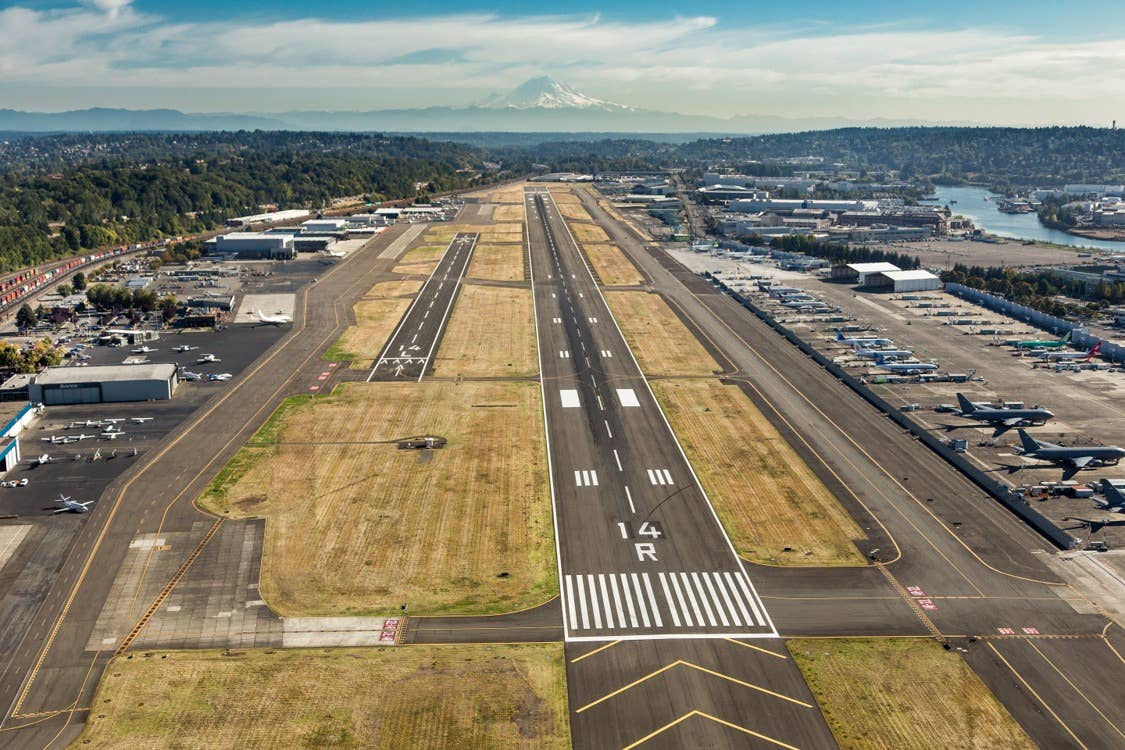FAA Adds Optimized Profile Descents at 11 Airports
The new airport approach routes are expected to smooth landings while also saving about 90,000 gallons of fuel annually, according to the agency.

The FAA announced new Optimized Profile Descents (OPDs) for 11 U.S. airports.[Credit: Shutterstock]
One of the first lessons an airplane pilot learns when they take an airplane into the sky is that there has never been an airplane that stayed stuck up there. They all come down eventually, often on established instrument routes that have step-downs.
Since 2014 the Federal Aviation Administration has been adjusting these routes in the name of fuel saving and emissions reduction. This week, the FAA announced new Optimized Profile Descents (OPDs) for 11 U.S. airports.
New OPDs are now in place at Orlando, Kansas City, Omaha, Reno and six airports in Florida. Instead of flying step-downs, the aircraft performs a stabilized descent to the runway.
According to the FAA, this change could save millions of gallons of fuel and reduce greenhouse gas emissions.
“We are investing across the entire system to provide passengers with the best travel experience," Acting FAA Administrator Bill Nolan said in a statement. "The era of choppy descents is coming to an end, providing a smoother landing and saving fuel in the process."
Under traditional procedures, aircraft repeatedly level off and power up the engines. This burns more fuel and requires air traffic controllers to issue instructions at each step. With optimized descents, aircraft descend from cruising altitude to the runway in a smooth, continuous path with the engines at near idle.
The airports with the new OPDs are:
- Boca Raton Airport (KBCT)
- Fort Lauderdale Executive Airport (KFXE)
- Kansas City International Airport (KMCI)
- North Palm Beach County General Aviation Airport (F45)
- Eppley Air Field, Nebraska (KOMA)
- Offutt Air Force Base, Nebraska (KOFF)
- Orlando International Airport (KMCO)
- Palm Beach County Park Airport (KLNA)
- Palm Beach International Airport (KPBI)
- Pompano Beach Airpark (KPMP)
- Reno/Tahoe International Airport (KRNO)
New OPDs, By the Numbers
The FAA estimates the new descents will save more than 90,000 gallons of fuel on average and will reduce greenhouse gas emissions by 27,000 tons annually. For perspective, this savings is the equivalent to fuel used by 62 Boeing 737 flights between New York and Cleveland.
The addition of these 11 airports brings the total number of airports in the national airspace system with OPDs up to 64.
The program was first implemented in 2014. There are OPD procedures in use at airports in airline hub cities such as Atlanta, Charlotte, Cleveland, Columbus, Denver, Detroit, Fort Lauderdale, Houston, Las Vegas, Miami, Phoenix, Portland, Seattle, Tampa and Washington, D.C.
The OPD program is part of the Aviation Climate Action Plan. The United States is targeting the year 2050 to reach net-zero greenhouse gas emissions for the U.S. aviation industry. The FAA is assisting by providing money for research into fuel-saving technologies and noise reduction, the application of electric propulsion, sustainable aviation fuel and testing on ways to reduce fuel burn and taxi time.

Sign-up for newsletters & special offers!
Get the latest FLYING stories & special offers delivered directly to your inbox






